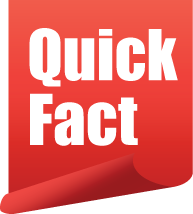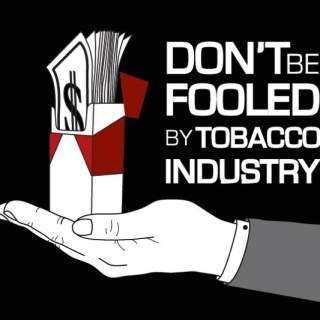Reducing Tobacco Affordability and Consumption
Excise tax increases that significantly raise tobacco product prices and reduce their affordability are among the most effective fiscal measures to reduce tobacco consumption (and thereby its adverse health consequences) by discouraging purchase of tobacco products, thereby encouraging tobacco cessation and preventing tobacco uptake among various segments of the population, in particular price-sensitive young people and the poor. Tobacco taxes can therefore have large aggregate benefits for public health and socio-economic development, primarily through healthier and more productive populations and reduced healthcare costs, reducing poverty, and providing a reliable source of government revenues. For these reasons, tobacco tax increases are described as a win-win policy measure, i.e. a highly cost-effective WHO “best buy” public health intervention and a reliable source of domestic financing.
The World Bank has recommended that the total tax burden should be 66% to 80% of the retail price, and more recently, the WHO has recommended that at least 70% of retail price should be excise. The current global guidance for tobacco taxation, however, remains to be WHO FCTC Article 6 and its implementation guidelines (adopted by the WHO FCTC COP in 2014), which recommend that governments should adopt long-term tax and price policies that meet both their public health and fiscal needs.
This means applying specific or mixed (specific and ad valorem) taxes on all tobacco products, taxing all tobacco products in a similar way (to reduce the potential for product substitution), and regularly increasing tax rates so as to continually reduce affordability of tobacco products. This also means strengthening tobacco tax administration (licensing, warehousing, anti-forestalling, fiscal markings, and enforcement), considering dedicating tobacco tax revenues to tobacco control programmes, and prohibiting or restricting tax/duty-free sales of tobacco products .
This chapter provides an overview of the tobacco tax situation in ASEAN countries, where tax policies have been strengthened in some countries, but require more improvements in others. Thailand has the highest tax burden as a percentage of retail price (78.6%), followed closely by Philippines (71.3%) and Singapore (67.5%). These countries are good examples where tax increases have contributed to a decline in smoking prevalence rates alongside higher tobacco tax revenues. Most countries also do not have any long-term tobacco tax policies with regularly evaluated fiscal and public health targets. Cigarette prices remain affordable and relatively low throughout the region, particularly in Cambodia, Lao PDR, and Vietnam (less than USD 1 per pack) where regular tax increases are needed to keep pace with economic and income growth.
In the case of Lao PDR, the government's lopsided Investment License Agreement (2001-2026) with Imperial Brands prevents the Lao government from benefiting, as the government continues to lose millions in tobacco tax revenues (see page 19) while being unable to reduce tobacco use .

Cigarette affordability: Affordability of the most sold brand of cigarettes (2020), globally

Cigarette affordability: Relative Income Prices (RIP)*of cigarettes in ASEAN

Prices of most popular cigarette brand

** Djarum Super was the most popular brand prior to 2014. There are no licensed tobacco importers and retailers in Brunei since May 2014.
***The study was conducted among Indonesians aged between 14 -78.
Tobacco tax burden as percentage of cigarette retail price in ASEAN

Cigarette tax systems in ASEAN

**Based on the new tax law passed in 2016, the excise tax rate should be 30% (2016-2017); 45% (2018-2019) and 60% (2020 onwards). However, the new tax rate is not enforced due to theunfair Investment License Agreement (ILA) with tobacco industry signed in 2001. Lao Tobacco Company (LTC) stops paying specific tax LAK 600 per pack since September 2019.
***These rates have been applied from 16 September 2017 to present. A single rate of 40% of SRP and THB 1.2/stick was scheduled to be applied from 1 October 2019 onwards; however, because of tobacco industry opposition, enforcement was postponed indefinitely.
Implementation of FCTC Article 6 Guidelines
Have regular adjustment processes or procedures for periodic revaluation of tobacco tax levels.

Indonesia

Myanmar

Philippines

Singapore
While some countries have made significant progress in implementing tobacco tax policies, the region as whole is advancing very slowly.
Have long-term policies on the tobacco taxation structure with regular monitoring and adjustments.

Lao PDR

Myanmar

Philippines

Thailand
Have had tax increases that are discouraging consumption.

Brunei

Indonesia

Philippines

Singapore

Thailand
Dedicate tobacco tax revenues to tobacco control/health promotion programmes.

Lao PDR

Thailand

Vietnam
Have a procedure/policy that protects tobacco tax and price policies from commercial and other vested interests of the tobacco industry.

Brunei

Philippines


Tobacco tax administration in ASEAN


Licensing of tobacco retailers in ASEAN

** SGD 340 for a new license and SGD 60 for admin fees. The fee revision took effect 1 January 2016.
***Two types of tobacco retail licensing (VAT- THB 500) and (Non VAT- THB 100) registrant retailers.

Tax all tobacco products: No duty-free allowance


Lost funds in tobacco tax revenue gap in 2 years (cigarettes) in selected ASEAN countries

Thailand: Higher tax rates, higher revenues, and reduced smoking prevalence
Thailand raised its cigarette excise rates 11 times (from 55% to 87% of factory price) between 1991 and 2012, which resulted in an almost fourfold gain in revenues from THB 15.89 billion (USD 530 million) to THB 59.91 billion (USD 1,997 million) over the same period. At the same time, overall smoking prevalence dropped from 32% (1991) to 21.4% (2011).
The Thai government has further increased the tax rate to 90% in early 2016, aimed at reducing number of smokers and raising tax revenue by about THB15 billion per annum.
In September 2017, a new tax structure and rate on tobacco came into force to further reduce cigarette affordability in Thailand.
Excise tax on cigarette in Thailand

Singapore: Highest tobacco tax burden in ASEAN
Concerned by slight increase in smoking prevalence from 2004 to 2010 and noting that the last tobacco excise tax increase was in 2005, the Singapore government decided to increase tax by 10% in 2014.


Philippines: Impact of sin tax law
 Fiscal gain: Strengthened, more efficient tax administration
Fiscal gain: Strengthened, more efficient tax administration
Tax structure simplified and higher tax rates

 Fiscal gain: Regular Adjustment to Tobacco Excise Tax Rates have resulted to an increase in government revenue
Fiscal gain: Regular Adjustment to Tobacco Excise Tax Rates have resulted to an increase in government revenue
Reforms in the tobacco excise tax system have increased government revenues over time (2012-2020)

 Fiscal gain: Increase in resources to achieve Universal Health Care
Fiscal gain: Increase in resources to achieve Universal Health Care
Share of health sector (80% of the incremental revenue for both tobacco and alcohol excise taxes)

** For 2014-2015, the primary reason in the decline is the so-called frontloading practice of the tobacco industry wherein they produce so much so that they will escape the higher tax rate the following year. Another reason is that the tobacco tax stamp is not yet mandatory so there are leakages in this period.
***For 2016, this is when Mighty Corporation was caught to be using fake tax stamps thus doing tax evasion.
Share of tobacco-growing provinces and funds for alternative livelihood of tobacco farmers

 Public health gain: Reduction in smoking prevalence (1998-2015)
Public health gain: Reduction in smoking prevalence (1998-2015)

 Public health gain: Department of Health budget between 2010 and 2020
Public health gain: Department of Health budget between 2010 and 2020

 Public health gain: Win for the poor
Public health gain: Win for the poor

Philippines: Distribution of incremental sin tax revenue for health

